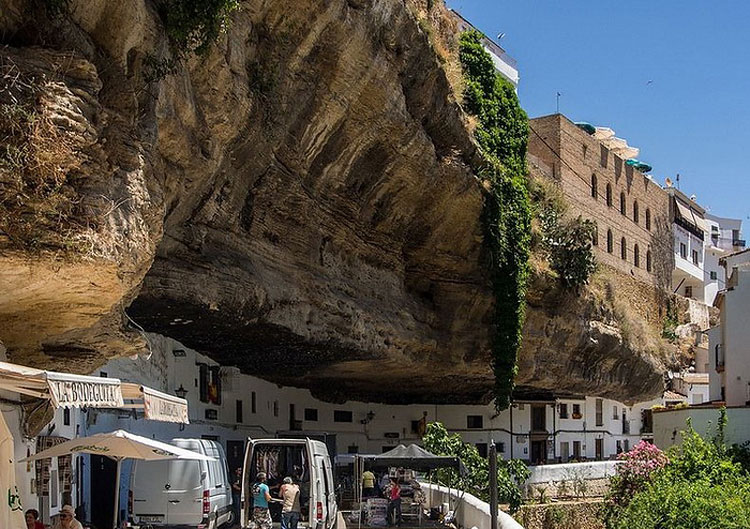The City that Builts into the Rock

Setenil de las Bodegas is a small town in the province of Cádiz, Spain. Named after its once flourishing wineries – bodegas – Setenil de las Bodegas (which means Setenil of the Wine Cellars) is unique among the pueblos blancos, white villages, of Andalucia and particularly famous for its dwellings built into the rock overhangs. The town extends along the course of the Rio Trejo with some houses being built into the rock walls of the gorge itself, created by enlarging natural caves or overhangs and adding an external wall.

Modern Setenil evolved from a fortified Moorish town that occupied a bluff overlooking a sharp bend in the Rio Trejo northwest of Ronda. The castle dates from at least the Almohad period in the 12th century. However, evidence of other nearby cave-dwelling societies, such as those at the Cueva de la Pileta west of Ronda, where habitation has been tracked back more than 25,000 years suggests that Setenil was occupied much much earlier. It was a spectacular defense place at the Arab age, which resisted several times the attacks of the Christian troops, before being conquered by the Catholic Monarchs in 1488.

The name of Setenil de las Bodegas dates from the 15th century, when new Christian settlers, in addition to maintaining the Arab olive and almond groves, introduced vineyards. The first two crops still flourish in the district but the once flourishing wineries—bodegas— were wiped out by insect infestation of the 1860s, which effectively destroyed most European vine stocks.

Over the intervening centuries, Setenil also gained a reputation for its meat products, particularly chorizo sausage and cerdo (pork) from pigs bred in the surrounding hills. As well as meat, it has a reputation for producing fine pasteles (pastries), and its bars and restaurants are among the best in the region.



